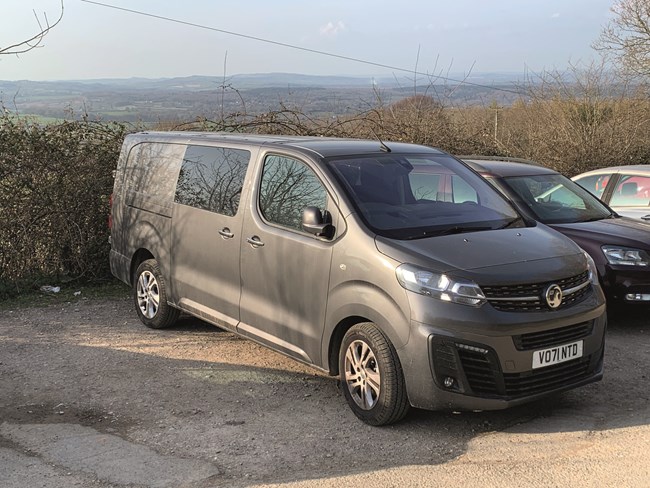- ETRUX launches new Ford E-Transit Trizone
- Renault gives UK debut to Master E-Tech at CV Show
- Isuzu D-Max long-term test – Latest Report
- Isuzu D-Max V-Cross Steel Edition revealed
- IVOTY Report: Stellantis explores the hydrogen proposition
- New Maxus EVs include eDeliver 5 van
- Used LCV values reach six-month high
- ADVERTISEMENT FEATURE: IVECO Daily Mission Awards 2024 Q2 Round-up: Grounds Maintenance & Forestry
- Stellantis Pro One electric vans review
- Mitie adds 5,000th EV to fleet
Vauxhall Vivaro long-term test – Final Report
Date: Friday, June 24, 2022 | Author: James Dallas

5th Report
With the clock ticking down on the internal combustion engine Vauxhall has moved quickly to get its electric Vivaro-e into the market place ahead of many competitors (notably arch-rival Ford) and has also got a Vivaro-e Hydrogen lined up for further down the evolutionary line.
Once these technologies move into the mainstream, and the electric Vivaro has already been doing brisk business with large fleets such as British Gas and Mitie plus SMEs like fruit and vegetable supplier Riverford, then the main concern for operators is likely to be the efficiency of the charging infrastructure and whether it can keep their vans sufficiently charged to complete their missions without increasing downtime.
In the meantime, however, most businesses still rely on diesel, which means they must not only be wary of low-emission zones but, with the cost of filling up at the pumps soaring, also work to keep fuel consumption as low as possible.
In terms of economy, my double- cab Vivaro has performed respectably enough, its mpg has been boosted by a couple of long trips out of town but it has not suffered dramatically from a return to urban driving and is averaging at just under 34mpg. While in no way obsessive about adhering to an eco-friendly driving style, I do try to avoid excessive braking and sharp acceleration and keeping the van in the gear where the engine is happiest.
The Vivaro’s efficient stop/start system and the fact I have more often carried bulky rather than heavy loads in the back has also helped keep consumption under control.

It is a compliment to the refinement and soundproofing installed in the Vivaro’s cabin that engine noise rarely intrudes into the interior because from outside the van it has to be said the 2.0L turbocharged diesel is not the quietest engine around. The good quality of the Multimedia Navi Pro sound system, featuring four speakers within the cabin, also masks exterior noise.
The second row of passenger seats in a crew van eats into load space, so choosing the double-cab based on the LWB Vivaro compensates for this loss of cargo capacity. But at just over 5.3m, it is a long vehicle and dextrous skills can be required when negotiating urban car parks and on-street parking spaces. At slightly over 1.9m high, drivers should be reassured that the van can safely fit into most underground car parks.
With the two rear side doors used for back seat passengers, access to the 4.0m3 load bay is via twin doors at the back, which can be pushed through 90º, or through 180º if you release the stays. Six tie-down rings are fitted on the load floor to secure cargo.
Report card: Fuel economy = 4/5
The Vivaro double cab is averaging slightly above the official combined mpg figure.
Vauxhall Vivaro doublecab Elite 3100 L2H1 2.0 150hp
Mileage 1,355mls
Official combined fuel economy 31.8mpg
Our average consumption 33.9mpg
Price range (ex VAT) £24,378-£30,518
Price (ex VAT) £30,518
Warranty 3yrs/100,000mls
Service intervals 30,000mls
Load length 2,365mm
Load width (min/max) 1,258mm/1,636mm
Load bay height 1,396mm
Load volume 4.0m3
Gross payload 1,245kg
Engine size/power 1,997cc/150hp
Gearbox 6-spd manual
CO2 143g/km
View The WhatVan Digital Edition


